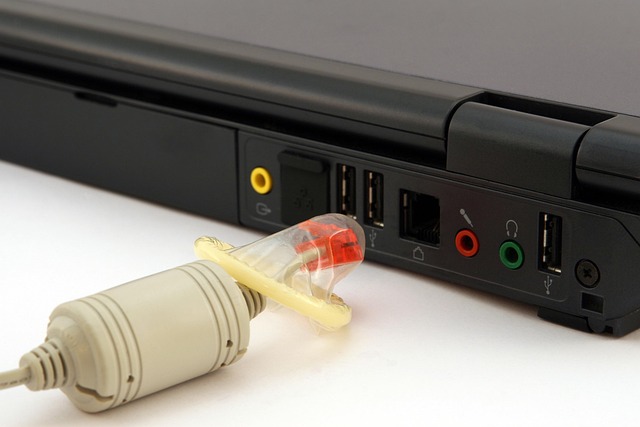Data tampering poses significant risks in today's digital automotive landscape, with complex vehicles and onboard diagnostic systems (OBD-II) vulnerable to malicious access. To mitigate these threats, implementing robust OBD-II access control, protective enclosures like Select OBD-II Port Protection, and advanced data protection software is crucial. These measures safeguard vehicle data, prevent unauthorized tampering, and ensure encrypted data exchange through the OBD-II port, fortifying car electronics against hijacking or manipulation. Regular monitoring, logging, and best practices for secure handling further enhance data integrity and system security.
Data tampering is a growing concern in the digital age, particularly with the increasing connectivity of modern vehicles. This article explores comprehensive strategies to prevent data tampering, focusing on the critical OBD-II port as a potential vulnerability. We delve into understanding the threats and risks associated with data manipulation, highlighting the importance of physical security measures, software-based protections, regular monitoring, and best practices for secure data handling. By implementing these measures, we aim to ensure the integrity of vehicle data and the Select OBD-II Port Protection.
- Understanding Data Tampering: Threats and Risks
- The Role of OBD-II Port in Modern Vehicles
- Implement Physical Security Measures for OBD-II Port
- Software-Based Protection for Data Integrity
- Regular Monitoring and Logging for Early Detection
- Best Practices for Secure Data Handling and Storage
Understanding Data Tampering: Threats and Risks

Data tampering is a significant concern in today’s digital age, especially within the automotive sector. With the increasing complexity of modern vehicles, their onboard diagnostic systems (OBD-II) have become vulnerable to malicious access and manipulation. Understanding these potential threats is the first step towards safeguarding vehicle data.
Tampering can manifest in various forms, from unauthorized access to the OBD-II port, enabling hackers to extract or modify critical vehicle information, to more sophisticated attacks using specialized software. This poses risks not only to individual vehicle owners but also to the automotive industry as a whole, impacting safety standards and data integrity. Implementing measures like robust OBD-II access control, protective enclosures, and advanced vehicle data protection software is crucial in mitigating these risks.
The Role of OBD-II Port in Modern Vehicles

In modern vehicles, the OBD-II (On-Board Diagnostics II) port plays a pivotal role in maintaining car electronics safety and security. This standardized diagnostic port allows for communication between the vehicle’s computer systems and external devices used for diagnostics and programming. However, it also serves as a potential vulnerability point, as unauthorized access can enable data tampering, compromising critical vehicle systems and sensitive driver information.
Selecting an OBD-II Port Protection device or diagnostic port cover is a proactive step towards safeguarding vehicle data. These solutions physically secure the port, preventing unauthorized access and tampering attempts. By implementing vehicle data encryption devices, users ensure that any data exchanged through the OBD-II port remains encrypted, adding an extra layer of protection to car electronics safety. This practice is particularly important as it helps prevent malicious activities like hijacking or manipulation of a vehicle’s diagnostics for nefarious purposes.
Implement Physical Security Measures for OBD-II Port

Implementing robust physical security measures for the OBD-II port is a crucial step in preventing unauthorized tampering with your vehicle’s data. This includes using specialized locks or covers designed to protect against unwarranted access. By selecting an OBD-II port protection device, you’re taking a significant step towards securing sensitive information within your car’s diagnostics system. These devices essentially act as a physical barrier, locking the port and preventing any unauthorized modifications or data extraction.
Consider an auto diagnostics lockdown mechanism that provides an extra layer of security for vehicular data transfer. This is especially important when dealing with high-value vehicles or in areas where vehicle theft and tampering are prevalent. A reliable vehicular data shield can ensure that your car’s onboard computer and connected devices remain secure, protecting against potential malicious activities that could compromise both your safety and privacy.
Software-Based Protection for Data Integrity

Data integrity is a critical aspect of any digital operation, and securing data from tampering requires robust measures. One effective method to prevent unauthorized alterations is through software-based protection mechanisms. In vehicles equipped with On-Board Diagnostics (OBD) systems, the OBD-II port serves as a gateway for diagnostic and monitoring functions. Implementing Select OBD-II Port Protection can act as an OBD-II port barrier, restricting access to authorized users only. This technology ensures that any attempt to modify data through the diagnostic port is intercepted, providing a strong line of defense against tampering.
Moreover, advanced security systems can employ OBD II access control mechanisms, encrypting data and demanding valid credentials for any modifications. These software solutions not only safeguard against direct physical access but also deter sophisticated attacks aimed at manipulating vehicle diagnostics. With such protective measures in place, businesses and individuals alike can maintain the integrity of their data, ensuring that all interactions with diagnostic ports are secure and controlled.
Regular Monitoring and Logging for Early Detection

Regular monitoring and logging are critical components of preventing data tampering in modern vehicles equipped with OBD-II ports. By continuously observing and recording data from these diagnostic interfaces, organizations can quickly detect any unauthorized access or suspicious activities. This proactive approach leverages the Select OBD-II Port Protection mechanism to safeguard against tampering attempts. Such protections act as robust barriers, similar to an OBD socket cover, ensuring that only authorized parties can interact with the vehicle’s diagnostic interface.
Through sophisticated logging systems, any unusual behavior or attempted access can be immediately flagged. This early detection allows for swift action to be taken, preventing potential data manipulation and ensuring the integrity of the vehicle’s systems. By combining regular monitoring with robust protection mechanisms like diagnostic interface protectors, organizations can effectively navigate the challenges of data tampering in today’s connected automotive landscape.
Best Practices for Secure Data Handling and Storage

To prevent data tampering, best practices for secure data handling and storage are paramount. Start by implementing robust access controls. Restrict physical access to sensitive areas, such as the OBD-II port, using protection mechanisms like locked covers or secure enclosures. This acts as a first line of defense against unauthorized vehicle scanners and other malicious devices.
Additionally, leverage digital dashboard protection tools that encrypt data at rest and in transit. Utilize strong authentication methods for all user access, including two-factor authentication (2FA). Regularly update firmware and software to patch vulnerabilities and ensure compliance with industry standards. Employ secure communication protocols like TLS/SSL for data exchange between devices and servers, further bolstering against potential OBD II theft prevention threats. Lastly, consider implementing a vehicle scanner lock system that disables or restricts access to critical functions when unauthorized attempts are detected.
To prevent data tampering in modern vehicles, a multi-layered approach is essential. By understanding the threats and risks associated with data manipulation, leveraging software protections, implementing robust physical security for the OBD-II port, and adopting best practices for data handling, we can ensure the integrity of vehicle data. Selecting appropriate OBD-II port protection measures is crucial in safeguarding against unauthorized access and tampering, ultimately fostering a secure digital environment within our automobiles.
